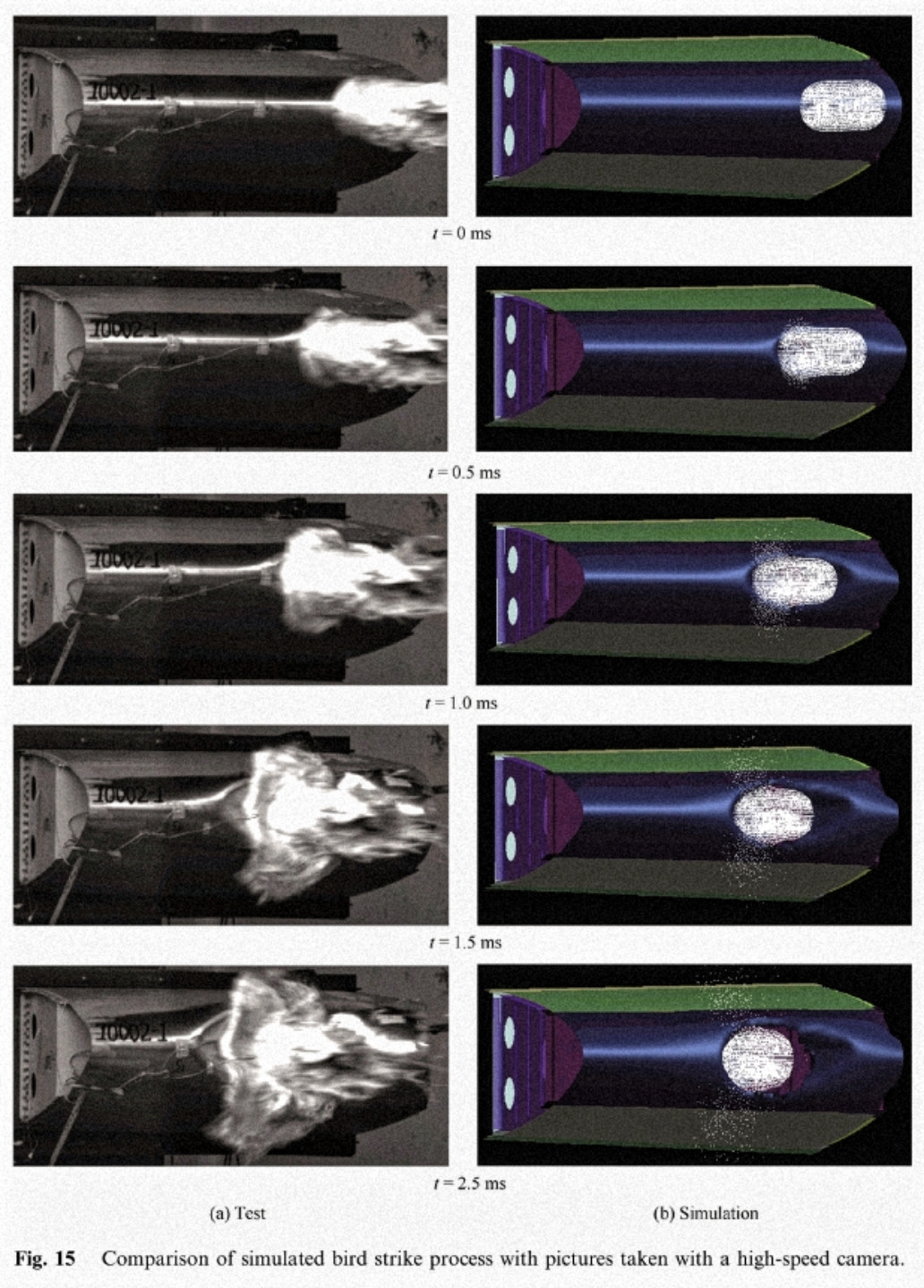Rewatched the MythBusters episode to get their speeds and data. Now, it's time to do some math.
$m = \frac{4~\mathrm{lb}}{32.174~\mathrm{ft/s}^2} = 0.124~\mathrm{slug}$
$V = 140~\frac{\mathrm{mi}}{\mathrm{h}} = 205.3~\frac{\mathrm{ft}}{\mathrm{s}}$
$t = 0.007~\mathrm{s}$
In both cases, $a = V1/t = 29333~\mathrm{ft/s}^2$
Since $F_\mathrm{avg} = ma$, $F_\mathrm{avg} = 0.124~\mathrm{slug} \cdot 29333~\mathrm{ft/s}^2 = 3647~\mathrm{lb}$
Separately, if we consider the numbers in the wikipedia article you posted, $V = 350~\mathrm{mi/h} = 513~\mathrm{ft/s}$. If we assume the same rate of energy dissipation as the MythBusters test and a 4lb chicken, then:
$k_\mathrm{MB} = \frac{1}{2}mv^2 = \frac{1}{2}(0.124~\mathrm{slug}) \cdot (205.3~\mathrm{ft/s})^2 = 2613~\mathrm{ft}\cdot\mathrm{lb}$
$\frac{k_\mathrm{MB}}{t_\mathrm{MB}} = \frac{2613~\mathrm{ft}\cdot\mathrm{lb}}{0.007~\mathrm{s}} = 373,311~\mathrm{ft}\cdot\mathrm{lb/s}$
$k_\mathrm{wiki} = \frac{1}{2}(0.124~\mathrm{slug})(513~\mathrm{ft/s})^2 = 16316~\mathrm{ft}\cdot\mathrm{lb}$
$t_\mathrm{wiki} = \frac{k_\mathrm{wiki}}{\frac{k_\mathrm{MB}}{t_\mathrm{MB}}} = \frac{16316~\mathrm{ft}\cdot\mathrm{lb}}{373311~\mathrm{ft}\cdot\mathrm{lb/s}} = 0.043~\mathrm{s}$
Then, $a = V/t = \frac{513~\mathrm{ft/s}}{0.043~\mathrm{s}} = 11737~\mathrm{ft/s}^2$
and $F = ma = 0.124~\mathrm{slug} \cdot 11737~\mathrm{ft/s}^2 = 1455~\mathrm{lb}$
If instead we assume the deceleration time is constant:
$a_\mathrm{wiki} = \frac{513~\mathrm{ft/s}}{0.007~\mathrm{s}} = 73285~\mathrm{ft/s}^2$
$F_\mathrm{wiki} = 0.124~\mathrm{slug} \cdot 73285~\mathrm{ft/s}^2 = 9087~\mathrm{lb}$
And interestingly enough, based on the MythBusters' testing, a frozen and thawed chicken would impart the same force.


